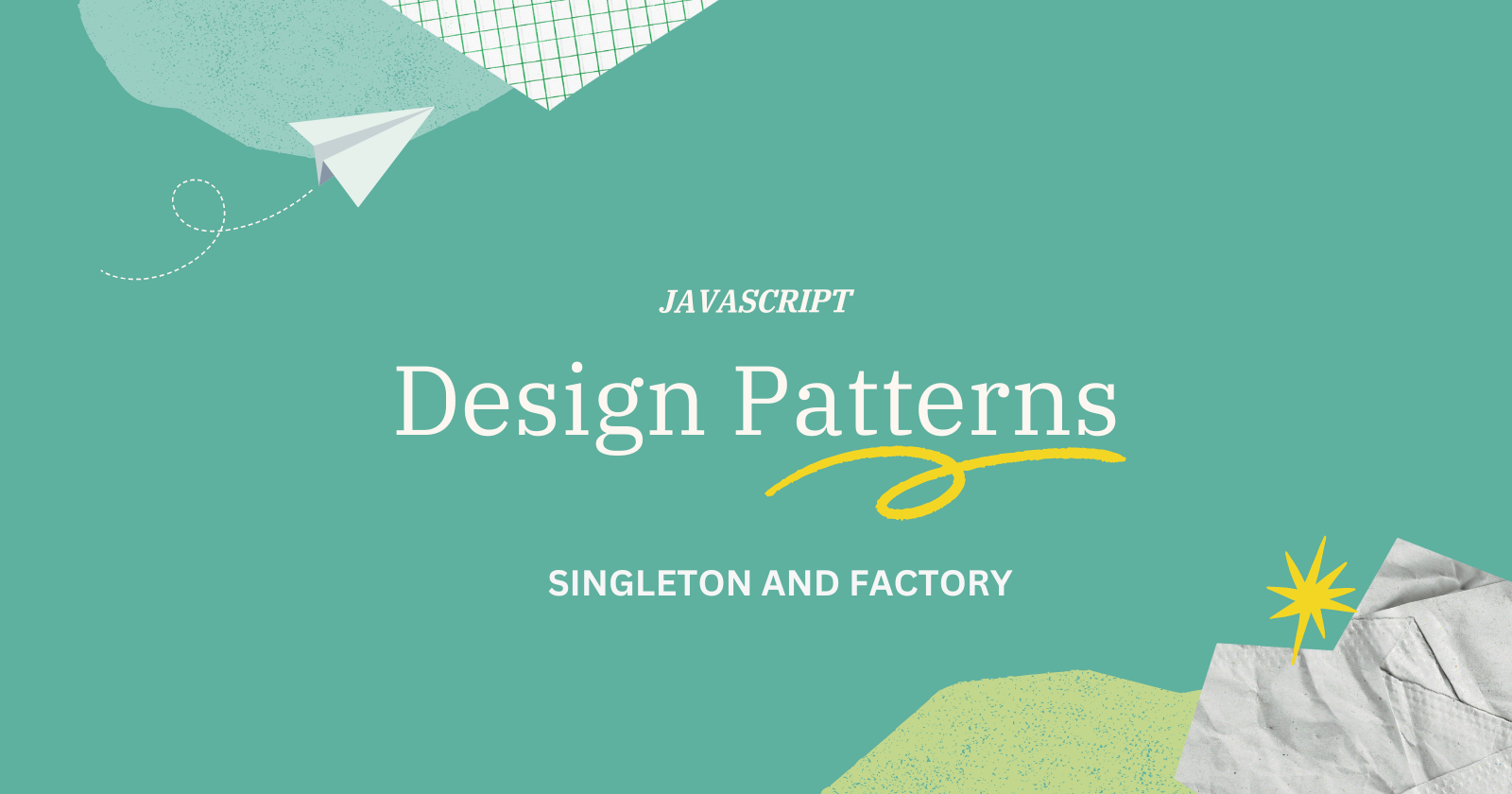JavaScript Design Patterns: Implementing the Singleton and Factory Patterns
 ByteScrum Technologies
ByteScrum TechnologiesTable of contents

Design patterns are proven solutions to common problems in software design. They provide a standardized approach to solving issues, making code more modular, reusable, and easier to understand. In JavaScript, design patterns are particularly valuable because of the language's flexibility and dynamic nature. Among the various design patterns, the Singleton and Factory patterns are two of the most commonly used. This blog will guide you through implementing these patterns in JavaScript, along with practical examples and scenarios where they are most effective.
What are Design Patterns?
Design patterns are templates for solving common design problems in a specific context. They are not specific to any programming language but can be implemented in any language, including JavaScript. By using design patterns, you can standardize the way problems are solved, making your code more predictable and easier to maintain.
The Singleton Pattern
What is the Singleton Pattern?
The Singleton pattern ensures that a class has only one instance and provides a global point of access to that instance. This is useful when you need to manage shared resources or ensure that certain operations occur only once, such as managing a database connection or a configuration manager.
Key Characteristics:
Single Instance: Only one instance of the class is created.
Global Access: The single instance is globally accessible throughout the application.
Lazy Initialization: The instance is created only when it is needed.
Implementing the Singleton Pattern in JavaScript
Here’s how you can implement the Singleton pattern in JavaScript:
class Singleton {
constructor() {
if (Singleton.instance) {
return Singleton.instance;
}
this.data = "Singleton Data";
Singleton.instance = this;
}
getData() {
return this.data;
}
}
// Usage
const singleton1 = new Singleton();
console.log(singleton1.getData()); // Output: Singleton Data
const singleton2 = new Singleton();
console.log(singleton2.getData()); // Output: Singleton Data
console.log(singleton1 === singleton2); // Output: true
Explanation:
The
Singletonclass has a staticinstanceproperty that holds the single instance of the class.When the constructor is called, it checks if an instance already exists. If it does, it returns that instance; otherwise, it creates a new instance and stores it in the
instanceproperty.As a result, all calls to
new Singleton()will return the same instance, ensuring that only one instance exists.
Use Cases for the Singleton Pattern
The Singleton pattern is particularly useful in scenarios where you need to control access to a shared resource or ensure that a particular action occurs only once. Common use cases include:
Configuration Settings: Managing application-wide configuration settings.
Logging: Creating a centralized logging mechanism.
Database Connections: Ensuring that only one connection to the database is established.
The Factory Pattern
What is the Factory Pattern?
The Factory pattern is a creational design pattern that provides an interface for creating objects but allows subclasses to alter the type of objects that will be created. This pattern is useful when the exact type of the object being created is determined at runtime.
Key Characteristics:
Object Creation: The pattern centralizes object creation, avoiding the need to instantiate objects directly.
Encapsulation: It encapsulates the object creation logic, making the code more flexible and maintainable.
Flexibility: The pattern allows the creation of different types of objects based on the input or configuration.
Implementing the Factory Pattern in JavaScript
Here’s how you can implement the Factory pattern in JavaScript:
class Car {
constructor(model, price) {
this.model = model;
this.price = price;
}
getDetails() {
return `${this.model} costs $${this.price}`;
}
}
class CarFactory {
createCar(type) {
switch (type) {
case 'sedan':
return new Car('Sedan', 20000);
case 'suv':
return new Car('SUV', 30000);
case 'sports':
return new Car('Sports Car', 50000);
default:
throw new Error('Unknown car type');
}
}
}
// Usage
const factory = new CarFactory();
const sedan = factory.createCar('sedan');
console.log(sedan.getDetails()); // Output: Sedan costs $20000
const suv = factory.createCar('suv');
console.log(suv.getDetails()); // Output: SUV costs $30000
Explanation:
The
Carclass represents the objects that will be created by the factory.The
CarFactoryclass encapsulates the logic for creating different types of cars. It uses aswitchstatement to return a specificCarobject based on the input type.This approach centralizes the creation logic, making it easy to manage and extend.
Use Cases for the Factory Pattern
The Factory pattern is ideal for scenarios where the exact type of the object to be created may vary depending on the input or configuration. Common use cases include:
UI Components: Creating different types of UI components (buttons, inputs, etc.) based on user interaction or application state.
Object Pools: Managing reusable objects that can be created and returned to the pool based on demand.
Game Development: Creating different types of characters or enemies based on game level or user input.
Conclusion
By mastering these patterns, you can write more efficient, maintainable, and scalable JavaScript code. Whether you’re managing configuration settings, creating UI components, or developing a game, these design patterns will help you structure your code more effectively.
Understanding and implementing design patterns not only enhances your coding skills but also prepares you to tackle more complex problems with proven solutions. As you continue to explore other design patterns, you’ll find that each has its own unique strengths, allowing you to choose the best tool for the job at hand.
Subscribe to my newsletter
Read articles from ByteScrum Technologies directly inside your inbox. Subscribe to the newsletter, and don't miss out.
Written by

ByteScrum Technologies
ByteScrum Technologies
Our company comprises seasoned professionals, each an expert in their field. Customer satisfaction is our top priority, exceeding clients' needs. We ensure competitive pricing and quality in web and mobile development without compromise.